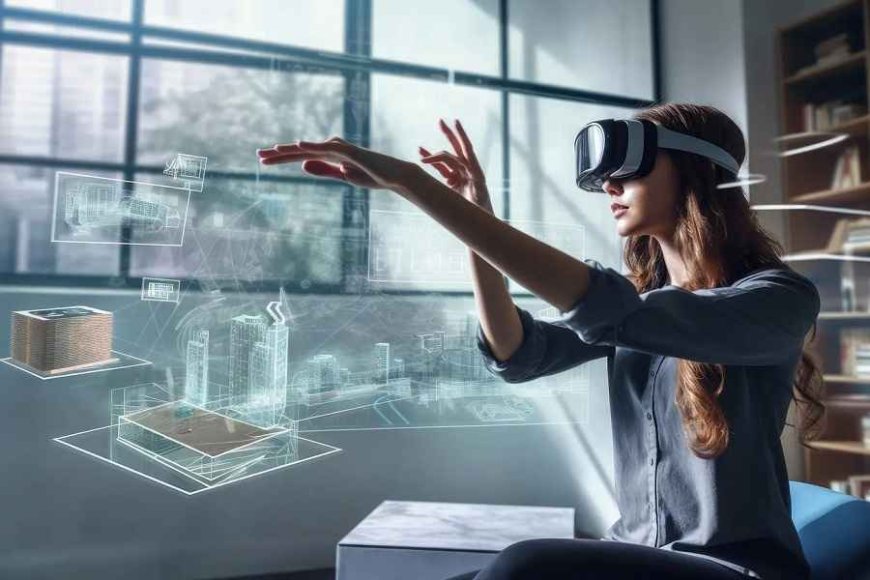Augmented and Virtual Reality: Unveiling the Future of Technology
Augmented Reality (AR) and Virtual Reality (VR) are two innovative technologies that have taken significant strides in recent years,

Augmented Reality (AR) and Virtual Reality (VR) are two innovative technologies that have taken significant strides in recent years, promising to reshape industries, enhance user experiences, and unlock new realms of possibility. In this article, we will delve into the latest developments in AR and VR technology, explore their wide-ranging applications, and discuss their potential impact on various industries.
AR and VR: Understanding the Basics
Before we delve into the latest advancements, let's briefly understand what AR and VR are:
Augmented Reality (AR): AR overlays digital content onto the real world, enhancing our perception of reality. It is typically experienced through devices like smartphones, AR glasses, or headsets. For instance, you can see this trend in popular applications like Pokémon GO and the captivating world of Snapchat filters.
Virtual Reality (VR): VR immerses users in a completely digital environment, shutting out the real world. It is commonly experienced through VR headsets like the Oculus Rift or HTC Vive. VR offers experiences ranging from immersive gaming to virtual travel.
The Latest Advancements in AR and VR
Immersive Hardware: Both AR and VR have seen major hardware advancements. VR headsets are now more comfortable, with higher resolution displays and improved tracking. Companies like Apple have also ventured into AR glasses, aiming to make AR more accessible to the masses.
Mixed Reality (MR): MR, a hybrid of AR and VR, blends the digital and physical worlds seamlessly. Microsoft's HoloLens is a prime example, providing a glimpse into how MR can revolutionize industries such as education, healthcare, and architecture.
5G Connectivity: The rollout of 5G networks has been a game-changer for AR and VR. The low latency and high bandwidth enable real-time, high-quality AR and VR experiences, making remote collaboration and streaming more accessible.
Applications of AR and VR
Gaming: The gaming industry has been a pioneer in adopting VR technology. VR gaming offers unparalleled immersion, allowing players to step into fantastical worlds and interact with their environment.
Education: AR and VR have immense potential in education. They can transport students to historical events, dissect virtual organisms, or provide hands-on training for complex tasks, enhancing learning experiences.
Healthcare: Surgeons can use AR to overlay important information during surgeries, reducing the need to divert their attention. VR therapy is also gaining ground, aiding in pain management and treating conditions like PTSD.
Retail: AR is changing the way we shop. AR apps allow customers to visualize products in their own space before purchasing, making online shopping more engaging.
Architecture and Real Estate: Architects and real estate professionals use AR and VR to create virtual property tours. This helps clients visualize designs and spaces, speeding up decision-making processes.
Entertainment: VR concerts and immersive theater experiences have gained popularity. With AR, interactive books and toys have become more engaging for children.
Military and Defense: VR is used for training simulations, allowing soldiers to practice in a safe and controlled environment. AR can provide heads-up displays for crucial information.
Impact on Various Industries
Manufacturing: AR can enhance worker productivity by providing real-time data and instructions. VR can be used for virtual prototyping and design, reducing the need for physical prototypes.
Travel and Tourism: VR enables virtual travel experiences, allowing users to explore destinations before booking a trip. AR can provide real-time translation and navigation assistance for tourists.
Marketing and Advertising: AR is being used to create interactive advertising campaigns. VR ads offer immersive storytelling, captivating consumers in new ways.
Architecture and Construction: Both AR and VR are transforming the design and construction process. Architects can walk through virtual buildings before construction begins, minimizing errors.
Healthcare: VR therapy and surgical training are improving patient outcomes. AR can assist surgeons during procedures, increasing precision.
Retail: AR is reshaping the retail experience, blurring the lines between online and in-store shopping. Virtual try-ons and AR-powered product information are becoming commonplace.
Education: AR and VR have the potential to democratize education, making high-quality learning accessible to students worldwide. They can bridge educational gaps and provide immersive experiences.
Augmented and Virtual Reality technologies have evolved rapidly, with an array of applications and the potential to transform various industries. As hardware continues to improve and connectivity becomes faster, the adoption of AR and VR is poised to skyrocket. Embracing these technologies is not just a matter of staying current; it's about unlocking new possibilities and revolutionizing the way we live, work, and interact with the world around us. The future of technology has arrived, and it's a blend of the real and the virtual, waiting to be explored.
